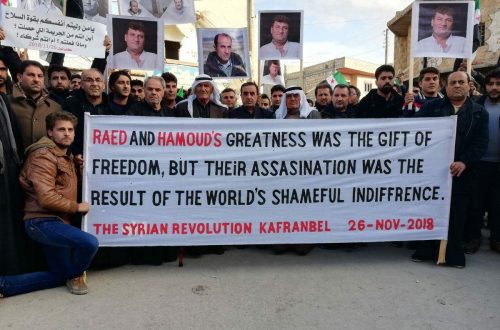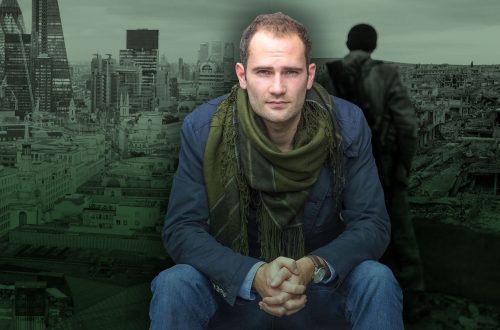This is a guest post by Kellie Strøm
The London Review of Books has published an article by Seymour Hersh, titled Whose sarin? The article presents accusations that the Obama administration engaged in “the deliberate manipulation of intelligence” in its response to the August 21 chemical attack in Syria.
Seymour Hersh has established a notable reputation as an investigative reporter, a reputation that will weigh the balance for some when considering how reliable this article might be. In this case, though it’s also worth considering the two reputable publications that declined to publish this article, Mr Hersh’s regular customers The New Yorker and The Washington Post.
Rather than rely on reputation then, it might be better to turn to expertise and evidence.
In Sy Hersh on Syria: Some Problems, Cheryl Rofer, chemist, chemical weapons expert, and retired supervisor at Los Alamos, focuses on his use of anonymous and uncheckable sources, his claims about the technical abilities of US agencies to monitor Syrian chemical weapons sites, his characterisation of intelligence analysis as cherry-picking, his focus on one analyst’s view of the range of Assad’s rockets, and his treating reports of certain rebels having some technical knowledge of sarin as meaning they had the capacity to actually produce the large volume of sarin used in the attack. On this point she links to an article by Dan Kaszeta, No, you can’t make sarin in your kitchen.
Dan Kaszeta is a former officer in the U.S. Army Chemical Corps and a former member of the U.S. Secret Service. He has 22 years’ experience in the field of chemical defense. His own response is titled Why Seymour Hersh has it wrong this time. He also criticises the characterisation of analysis as cherry-picking, and criticises the use of isolated anonymous sources. “Washington is full of ‘highly-placed sources,’ and there is (and always has been) a wide diversity of opinion within the intelligence community,” writes Kaszeta. He continues, “how can one reliably build an argument on a single informant who is anonymous, particularly when there are dozens if not hundreds of sources saying the opposite. There’s a word for this: ‘cherry-picking.’”
On Seymour Hersh’s suggestion that a rebel group might have manufactured the sarin used in the attack, Dan Kaszeta brings his expertise to bear. Based on the number of victims and the capacity of the rockets found at the attack sites, he estimates that between 370 kg and 4400 kg of sarin was used, his best guess being “the middle of this range, perhaps a ton.” This amount would require “a large, sophisticated, and very expensive factory-scale facility” to manufacture. “To put it into proper perspective, in 1994-1995 the Aum Shinrikyo cult in Japan built a purpose-built facility, spent many millions, and had a number of chemists and engineers,” he points out, “but the best that Aum could do, despite mastering the mechanics of the process, was to produce bucket-sized quantities.”
Both Cheryl Rofer and Dan Kaszeta recommend Eliot Higgins’ work identifying and analysing weapons used in the August 21 attack by means of the very many publicly available videos and photos of the Syrian war. Eliot Higgins has written a detailed response for Foreign Policymagazine, titled Sy Hersh’s Chemical Misfire. In it he focuses on the munitions used in the attack, and the suggestion reported by Hersh that the missiles could have been manufactured in a local workshop by rebels. Eliot Higgins gives details of the missiles used and includes examples of the open source video and photo evidence linking the missiles both to chemical attacks and to Assad’s forces.
Brian Whitaker, former Middle East editor of the Guardian newspaper, contrasts Eliot Higgins’ open source reporting with Seymour Hersh’s secret source stories. In his post titled Investigating chemical weapons in Syria he writes of Hersh that “he seems to have spent so much time listening to his secretive sources, and perhaps became so enthralled with them, that he never got round to looking at a wealth of information about the chemical attacks which is freely available on the internet.”
Chemical Weapons Conspiracy That Wasn’t – Hersh’s “Exclusive” Dissected, by Scott Lucas and Joanna Paraszczuk, argues that the scale and complexity of the attack was ignored in Seymour Hersh’s long article. Lucas and Paraszczuk suggest that one of Seymour Hersh’s anonymous sources, the “former senior intelligence official,” may be F. Michael Maloof, a former staffer in the GW Bush Administration. They point to the close similarity between accusations by Hersh’s secret source and public allegations made by Mr Maloof on WorldNet Daily, a highly partisan right-wing website. Mr Maloof later repeated his allegations on Russia Today. He has also previously appeared on the Iranian channel Press TV denouncing the lifting of the European arms embargo on the insurgency. Given his association with what are widely regarded as crude propaganda outlets, if Mr Maloof is Mr Hersh’s anonymous source then his anonymity might seem designed more to protect Mr Hersh’s reputation than Mr Maloof’s.
Foreign correspondent Richard Spencer summarises much of the above for Telegraph readers: Ignore the conspiracy theories: Assad was behind the Syrian chemical weapons attack.
Finally, turning again to Seymour Hersh’s reputation, it’s worth remembering the standard caveat that past performance is no guarantee of future results, and noting at the same time that beyond the highlights of his career he has previously produced some questionable stories. Bret Stephens provided a series of examples in a June 2011 Wall Street Journal article, Iran, Syria – and Seymour Hersh. Two erroneous stories related to Syria:
In February 2008, Mr. Hersh claimed that the mysterious Syrian facility Israel bombed the previous September “apparently had little to do with . . . nuclear reactors.” Last month, International Atomic Energy Agency Director General Yukiya Amano wrote that “the Agency concludes that the destroyed building was very likely a nuclear reactor.” In April 2009, he returned to Syria to write a hopeful piece about the prospects of a U.S.-Syria rapprochement, strongly hinting that Damascus could gradually be peeled away from Tehran. The evidence of the past two months suggests otherwise.
And so it seems this is a third strike on Seymour Hersh’s Syria record. Reader beware.


